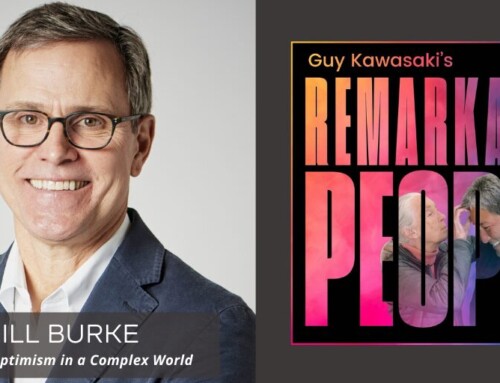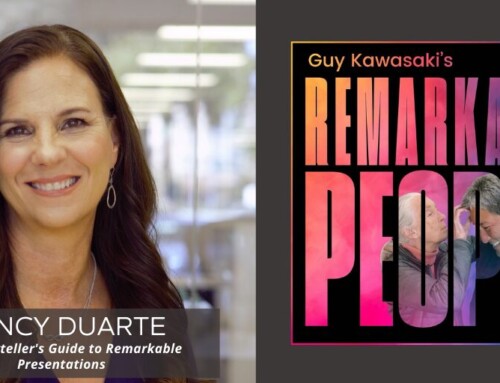On the Remarkable People podcast, I interview people such as Jane Goodall, Woz, and Stephen Wolfram who have changed the world. Their stories are inspiring, and I hope they encourage you, too.
This post has a different twist – let’s look at why and how you can foster change and the art of innovation in your company by driving your company with data.
Background: data is a good thing
We’ve been talking about being evidence-based, fact-based, and data-based for decades, but if you’re not up to speed with this, you aren’t alone. According to NewVantage Partners’ study, 69% of companies have failed to create a data-driven organization.
There is an avalanche of studies that support the business benefits, including this Forrester report indicates that data-driven companies grow at an average of more than 30 percent annually and are on track to earn $1.8 trillion by 2021.
Forrester did another study that concluded that businesses that rely on data management tools to make decisions are 58% more likely to beat their revenue goals than non-data driven companies.
Being data-driven isn’t only about revenue results. There’s also transparency and fairness. If everyone has access to the data driving decisions, we can establish reasonable data ethics policies that create even playing fields.
Why companies haven’t succeeded at this data-driven change
In my upcoming keynote at SAP’s Data and Analytics Virtual Forum: Data To Outcome, I’ll give you real inspiration and tips so you can get started. That’s the hard part, right? A few sneak peeks:
- This isn’t corporate altruism. The culture change, funding, and language start at the top. How do you do that? Attach your initiatives to real business outcomes. (No, “agility” is not a business outcome.) Here’s a highlight from McKinsey on how ShopRunner’s CEO made the change.
For tips on speaking the language of business, securing on-going funding, and getting buy-in from your executives, check out this free Data strategy master class.
In the end, this is a culture change. You need executives to model the right behavior, which requires you to get them analytics without days of manual assembly. You need executives to ask ad hoc questions of their analytics and brainstorm with other board members on innovative solutions. Are you there yet?
- To understand what is possible, survey the current technology landscape for data and analytics offerings. Web searches are easy. The hard part is accurately assessing where you are now. Luckily, there are free assessment tools, including SAP’s Next Generation Database & Data Management Assessment, which offers a unique approach to enable best-in-class database & data management processes in support of strategic priorities.
- Join SAP’s Data and Analytics Virtual Forum: Data To Outcome and you’ll be able to schedule one-on-one time with industry veterans to discuss how to renovate your data landscape, and even put your hands on some free software trials.
Therefore, what?
Your supply chain is challenged. Your revenue model is under pressure. Your employees are dealing with unprecedented challenges. Do you know what you need to solve all of those problems? Real-time data and data literacy to interpret that data.
All the supply chain optimization, new business models, collaboration models, and new markets require timely and intuitive access to data to drive innovative ideas. It’s a mistake to entrust these ideas to only data geeks.
The goal is to be able to answer a simple question and foster innovation to jump to the next curve. The question is, “Therefore, what?”
Data management is the “therefore” part. It enables you to see what’s happening to your organization, to see what trends are shaping the reality of your customers, and to read the tea leaves to understand what your opportunities.
Then you can take these insights and create the “what.” In other words, what new products, services, and practices will enable you to meet and exceed the needs of your customers and “dent the universe.”
I invite you to tune in to my keynote and the entire event for inspiration, encouragement, practical tips, and advice from other customers. Ask me questions. Ask the other presenters questions. Come away in two days with a plan that will motivate and drive your business.
This post is sponsored by my friends at SAP.







Leave a Reply